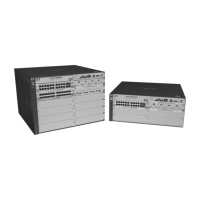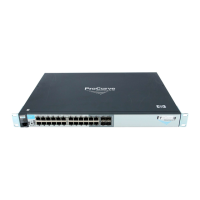Web and MAC Authentication
Configuring the Switch To Access a RADIUS Server
■ If the device is a switch or other VLAN-capable device, use the base
MAC address assigned to the device, and not the MAC address
assigned to the VLAN through which the device communicates with
the authenticator switch. Note that a Switch 5300XL series device
uses the same MAC address for all VLANs. (Refer to the chapter titled
“Static Virtual LANs (VLANs)” in the Advanced Traffic Management
Guide for your switch.)
Configuring the Switch To Access a
RADIUS Server
RADIUS Server Configuration Commands
radius-server
[host <
ip-address>] below
[key < global-key-string
>] below
radius-server host <
ip-address> key <server-specific key-string> 3-15
This section describes the minimal commands for configuring a RADIUS
server to support Web-Auth and MAC Auth. For information on other RADIUS
command options, refer to
chapter 5, “RADIUS Authentication and Account-
ing” .
Syntax: [no] radius-server
[host < ip-address >]
Adds a server to the RADIUS configuration or (with no)
deletes a server from the configuration. You can config-
ure up to three RADIUS server addresses. The switch uses
the first server it successfully accesses. (Refer to
“Chang-
ing RADIUS-Server Access Order” on page 5-28.)
[key < global-key-string >]
Specifies the global encryption key the switch uses with
servers for which the switch does not have a server-
specific key assignment (below). This key is optional if
all RADIUS server addresses configured in the switch
include a server-specific encryption key. (Default: Null.)
3-14
